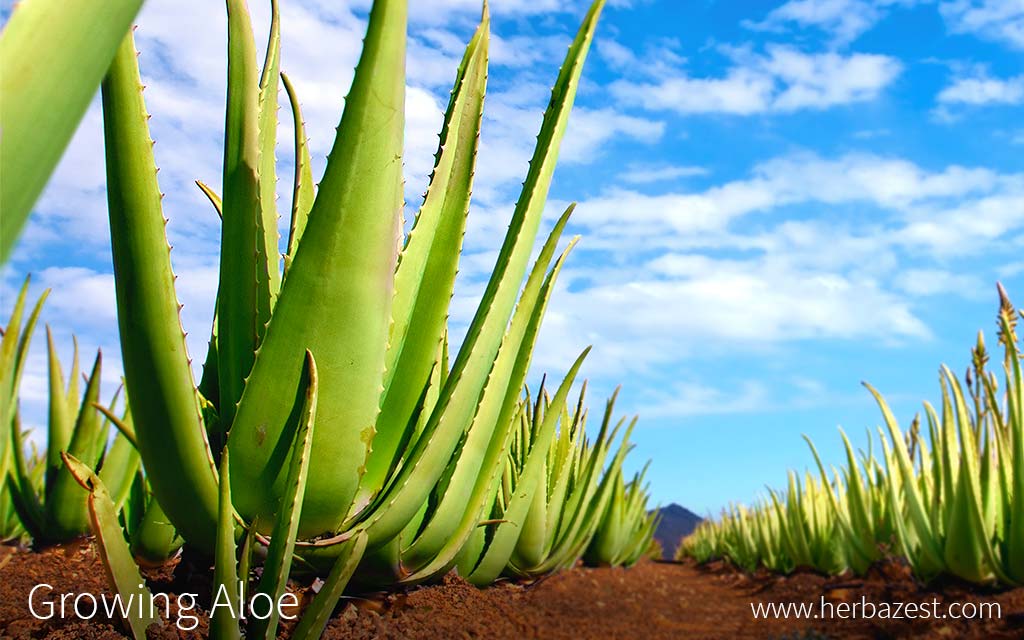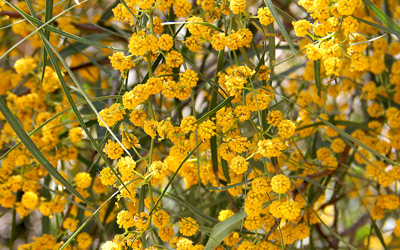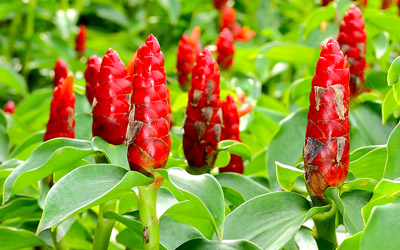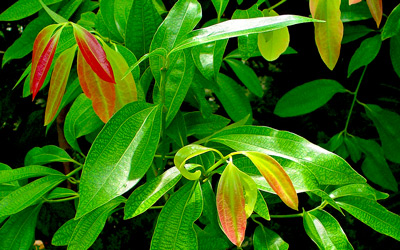The aloe plant grows naturally in arid regions around the world. It can be kept both outside and inside of the house, and it requires very little care to thrive. However, in order to make the most of its medicinal qualities, these growing guidelines offer useful information about how to cultivate aloe successfully at home.
1. Preparing the Soil
Aloe grows best in well-drained soil. In nature, aloe plants are often found growing in rocky, exposed areas, as they can withstand heat and drought and do not need a lot of nutrients to thrive.
Whether in a pot or a garden, if the medium in which you are planning to grow your aloe plant does not have good drainage, mix the soil with some coarse sand or pea gravel. You can also use a commercial potting mix with extra perlite, granite grit, or coarse sand added, or a packaged "cacti mix" potting soil. If you are planting it in a container, it must have a large drainage hole.
2. Planting
Planting Aloe Outdoors
Aloe is most commonly grown from sprout shots or plant suckers, which are a form of asexual, vegetative propagation in succulents and consist of small aloe plants that grow around the base of the mature plant. They should be cut away, then allowed to dry and scab over for three days before being replanted outside.
When planting aloe, do it very shallowly, just covering its roots and lower tip with soil. The size of your aloe plant will depend on the amount of room it has to grow. When choosing a place for aloe, consider that its diameter can reach over 12 inches (30 cm), the same as the length of its leaves. To promote healthy growth, space the plants 12 - 18 inches (30 - 46 cm) apart.
Aloe plants cannot withstand temperatures below 32F (0C). If you are living in a region that experiences cold winters, it will be necessary to bring your aloe plants indoors during cold months.
Planting Aloe Indoors
Aloe vera makes a great, low-maintenance indoor plant when the right conditions are met. You can start aloe in small pots and then move it to bigger ones as it grows, but what is important at all times is using a good mix of loamy and sandy soils, as well as containers with good drainage. For planting, follow the above procedure.
Since aloe needs plenty of sun to thrive, it is best to keep it in a bright location, near a south- or west-facing window.
While aloe is a plant that naturally grows in desert environments, when growing it at home, it is advised to soak the soil during the summer, allowing it to dry before the next watering. The plants can be moved outdoors during the summer as long as you remember to bring them back indoors prior to the first fall freeze.
One thing to have in mind when cultivating this type of succulent at home is that the aloe plant is known for producing showy yellow or red flowers in late winter or spring, but when grown indoors, aloe rarely blooms.
3. Plant Care
Watering
Because aloe is a drought-tolerant desert plant, you do not want to overwater it. However, keep in mind that water deficiency may lead to decreased formation of plant suckers. Only water aloe when the top inch of soil around the plant is dry to the touch. When watering, be generous, but do not let the plant sit in water. The soil should be allowed to drain.
Fertilizing
Because this succulent naturally grows in poor soil, it is not strictly necessary to fertilize your aloe plant. However, if you choose to give it a boost, fertilize it during the spring with a dilute solution of bloom type fertilizer (10-40-10).
Weed Control
Because of the harsh, dry environment in which aloe grows, weeds are not a major issue, and - if they appear - you can easily remove them by hand.
4. Pest & Disease Control
The thick skin of aloe does great work protecting the plant, so pests and diseases are rare occurrences. However, it can be affected by leaf spot disease, which typically causes small, brown spots with yellowish margins on the leaves; and mites, which can cause galling or abnormal growth. Since the use of harsh chemicals or pesticides on the leaves is not recommended, infected plants should be removed and placed in plastic trash bags to prevent re-infestation.
The few pests and diseases that may affect aloe can be easily prevented and controlled by maintaining a good level of humidity around the plant, using periodic misting or washing.
5. Harvest
Aloe is typically ready for harvest after about three years. Pull the mature leaves away from the main plant and cut them close to the stem to avoid exposure and oxidation of the inner leaf material. Cut only three to four of the largest, older leaves, preferably during the morning, so that you don't disturb the growth of the plant.
6. Storage
After harvesting aloe, you should cut open the underside of the leaf to reveal the meat and gel inside. Place the leaves in such a way that the gel drains into a vessel or collection drum. Transfer the fresh aloe gel into a sealable storage container and store in the refrigerator, where it will keep for a week. To extend shelf life, you may mix aloe with vitamins.





